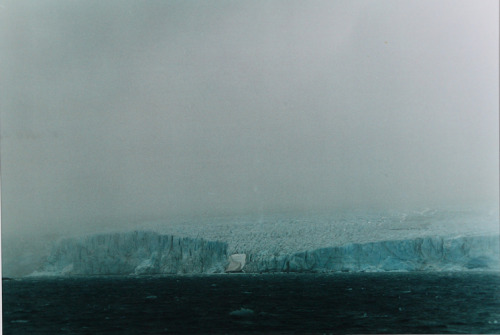Dikeou Superstars: Dan Asher (1947-2010)

As flat, rectangular entities floating on the white wall of a digital format, such as our website, something about the devastating quality of Dan Asher’s Untitled Antarctic Series (1999) is lost—a presence, or aura. The series needs to be experienced in person. As you stand before them, each image impresses on the viewer the weight of its own distinct solemnity. And as a whole, the series creates an immense wall of color marked with seemingly unending vastness. Selections from Asher’s Untitled Antarctic Series on view at the Dikeou Collection were featured in the first color issue of zingmagazine, in 1998, and were created by the artist during two separate trips, first to Greenland, and later to the Antarctic. Driven by political and environmental concerns, desperate to discover new places, and determined to photograph these enigmatic edifices of ice before they disappeared, Asher’s motivations seem almost subsidiary to the human experience of isolation enclosed within the images. More than merely documentary, the Untitled Antarctic Series possesses an aesthetic which can be determined both Beautiful and Sublime.
A suffuse silence is imbued in the hushed hues of Asher’s icebergs. While not all the photos have blue in them—still murmurs of clouds burn in umber, stenciled outlines of monumental and ghostly forms appear barely discernable amidst cloudy indigo, and jagged aqua cuts through steel grays—the idea of blue seems to be pervasive throughout. In part, this is because compact glacial ice is blue. But the prevalent blue is, here, a condition of the human kind. Indeed, in his project for issue 7 of zingmagazine, Asher talked only of blue, stating, “I can now sense the full impact of the age-old expression “feeling blue.”

On the walls at Dikeou Collection, Asher’s images serve as a somber, contemplative pause in a curated space filled with conceptual, interactive, and humorous art. The quality of the Untitled Antarctic Series is strikingly different, too, when copared with the artist’s work and life in New York and Cologne. He was an artistic force: a filmmaker, photographer, sculptor, painter, and musician. Asher began taking photos in his teens, and photographed important rock and reggae musicians in the seventies. In the eighties, he created expressive pastels of masklike faces à la Basquiat, and in the nineties created minimalist drawings and sculptures while living in Cologne. In interviews given by people who knew Asher in Brandon Johnson’s Far From The Madding Crowd, or in Stephanie Schwam’s Documentary, Near Life Experience, the portrait of a man who lived a cacophonous, messy, complicated existence emerges. People seem to remember his art as brilliant and his persona as crazy, sincere, jarring, jocular, and dysfunctional. These personal traits resonate especially with his feathery, impasto, expressionist pastels from the early eighties—frenzied untitled works with bold and vivid colors.
So how does one reconcile the tumultuous individual—Dan Asher—and the Untitled Antarctic Series? Though it is unsurprising that Asher felt compelled to take off to extremely remote places—apparently as the sole passenger on a Russian icebreaker ship, in one instance—it is hard to situate the Antarctic work within the idea of Dan Asher, and his oeuvre. Ultimately, one can return to the feeling of isolation which pervades. The images in the Untitled Antarctic Series are detached in a way that seems in line with the posthumous picture which has formed of an artist perceived, and self-proclaimed, an outsider. Perhaps the photographs were taken in instances of recognition—enigmas, human and glacial, both vestiges of the past, irregular, stunning and quite alone.
-Rebecca Manning
